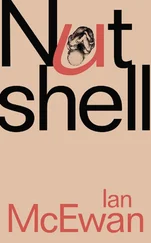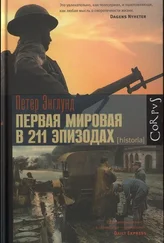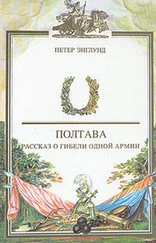According to a less widespread theory, the public urination-syndrome merely reflects the domination of Czech society by male chauvinists, who don’t care about their surroundings. And then, of course, there are those who see it as a nation-wide problem with alcoholism. In any event, a foreignerin the Czech Republic should better be prepared: a man, who is waving his genitals in public, is not necessarily an exhibitionist, but more likely an ordinary chap on his way home from the local hospoda .
After the fall of the Iron Curtain, Europe has become a marvellously messy place. True, the Oder and Neisse Rivers still divide the richer half of the continent from the poorer, but apart from economic power, the east/west antagonism used during the forty years of the Cold War has evidently become outdated. But if Europe has changed politically, have its inhabitants changed mentally?
In an attempt to sort Europe into groups of regions where people share the same beliefs and values, sociologists have conducted annual surveys since the beginning of the 1980s that are presented regularly in European Values Study .
Here, inhabitants of countries stretching from Iceland in the north to Greece in the south and from Portugal in the west to Russia in the east, are asked to present their opinions on matters such as religion, sexand openness about sexual matters; their acceptance of foreigners; the importance they attach to family relations, law and order, social security, and material goods; and whether they prefer liberal or authoritarian relations between children and parents, respectively between pupils and school teachers.
When the answers to these value-related questions are sorted out, the Cold War distinction becomes meaningless. Europe is not divided east/west, but north/south. Or to put it more precisely: when it comes to attitudes towards life, Europe has two anti-poles — the Balkanand the Scandinavian attitude.
According to the extreme Balkan model, it’s crucial to maintain “traditional values” (fathers as the unrivalled head of family, children blindly obeying their parents), religion is very important, and neither foreigners nor “new ideas” such as feminismare very welcome. In school, teachers are supposed to maintain strict discipline, and sexual matters, let alone homosexualones, are not to be discussed in public.
The extreme Scandinavian model, on the other hand, is characterized by a very strong openness and a liberal attitude towards everything from children and education to sex and religion. Contrary to the southerners, the northerners don’t cry for more law and order, they don’t attach too much importance to material goods (maybe because they are too spoiled), and their negligence of family ties often results in social isolation and even loneliness.
So, where do the Czechs and Central Europefit in?
As one might expect, the answer is not entirely ambiguous. In some matters, Czechs display downright extreme tendencies. Few nations in Europe have less confidence in official institutions (see: Kajínek, Jiří; Scepticism), and the Czechs are generally distrustful towards other people — be it foreigners or compatriots. When it comes to religion, only the former East Germany can boast more lax relations with God, and where sex is concerned, the Czechs confirm their reputation as extremely broad-minded. In family matters, on the other hand, they tend towards the traditional model, which is especially apparent when it comes to education (see: Dancing Schools).
The survey targets numerous other areas as well, but when all of the answers are tallied the conclusion is quite apparent: the Czechs end up much farther to the north than their geographical position indicates. So while the Poles, because of their strong religiousness and respect for traditions, end up in the near vicinity of the Romanians and Bulgarians, the Czechs (and also the Slovenes!) land not far away from Sweden.
This, of course, should only serve as an indication that the old Cold War divisions are practically irrelevant in real life. And the Czechs themselves, scepticalas ever, would certainly remind you not to put too much confidence in what people declare in different surveys. As Winston Churchill, the inventor of the term Cold War, once confessed: I only trust statistics that I have forged myself!
Almost 50 years of totalitarian rule, when disgusting crimes were hailed as heroic actions while heroic actions where condemned as disgusting crimes (see: Horáková, Milada), have left the Czechs utterly suspicious of any officially “verified” explanation of the many dramatic events that have taken place in their country.
This widespread distrust has given rise to a wild array of historic myths. All of them have one common denominator: events that seem to have a simple and perfectly logical background are, in reality, the result of a conspiracy conducted by “dark forces”. This is not entirely inappropriate when it comes to the 1950s and early 1960s, when conspiracies evidently flourished. However, it’s more surprising that an event as relatively recent and significant as the Velvet Revolution in 1989 is also entangled in a mesh of myths.
According to the official version, the Velvet Revolution started on November the 17th, when the Socialist Youth Organization (SSM) arranged a demonstration in Prague’s Albertov district to commemorate Jan Opletal, a medic who was shot dead by the Nazi occupants in 1939. After some brief speeches, the students marched to Karel Hynek Mácha’sgrave at Vyšehrad — and then towards the centre of Prague.
By the time they reached the end of the Národní Avenue, where special riot police forces blocked access to Wenceslas Square, the students were accompanied by tens of thousands of ordinary citizens, who peacefully chanted freedom slogans. Yet the Special Forces reacted with a brutality uncommon even to the Bolshevik regime. When the savage beatings ceased an hour later, nearly forty demonstrators had been rushed off to hospitals, and one student was even reported murdered by the police.
The violent action on the evening of November the 17th later became known as the “Massacre on the Národní Avenue” (a rather pathetic monument to commemorate the event has been installed in the arcade outside Národní 16). The word “massacre” may seem a bit exaggerated, since the only dead demonstrator, as it was established some days later, was actually a fake (although the alleged police murder served as an effective reminder of Jan Palach). Nevertheless, the regime’s brutal behaviour against defenceless students triggered a strike among Czech actors and subsequent demonstrations and civic protests in nearly every city and town in the country.
In the following days, the Bolsheviks were forced to renounce one privilege after another. After two weeks of mass demonstrations — some of them attended by almost one million Czechs — the regime collapsed entirely. “Love and truth” had finally defeated “lies and hate”, and the Czechs had added a bright — and much-needed — chapter to their modern history.
Or was everything different? Visit any hospoda in this country, and you’ll probably hear another version. To quite a few Czechs, the Velvet Revolution was, in reality, a reform-communist putsch that failed.
One of the best “proofs” of this conspiracy theory is that the students, participating in the demonstrations on November the 17th were led to the centre of Prague by an agent from the secret police, or StB (see: Lustration) who acted as a radical SSM agitator (the agent’s presence was later documented). At Národní Avenue, the same secret agent supposedly played the role of the student who was beaten to death by the police. The purpose? To publicly discredit the orthodox leadership of the Czechoslovak Communist Party and thus help the Party’s reform wing gain power.
Читать дальше








![Theresa Cheung - The Dream Dictionary from A to Z [Revised edition] - The Ultimate A–Z to Interpret the Secrets of Your Dreams](/books/692092/theresa-cheung-the-dream-dictionary-from-a-to-z-r-thumb.webp)



